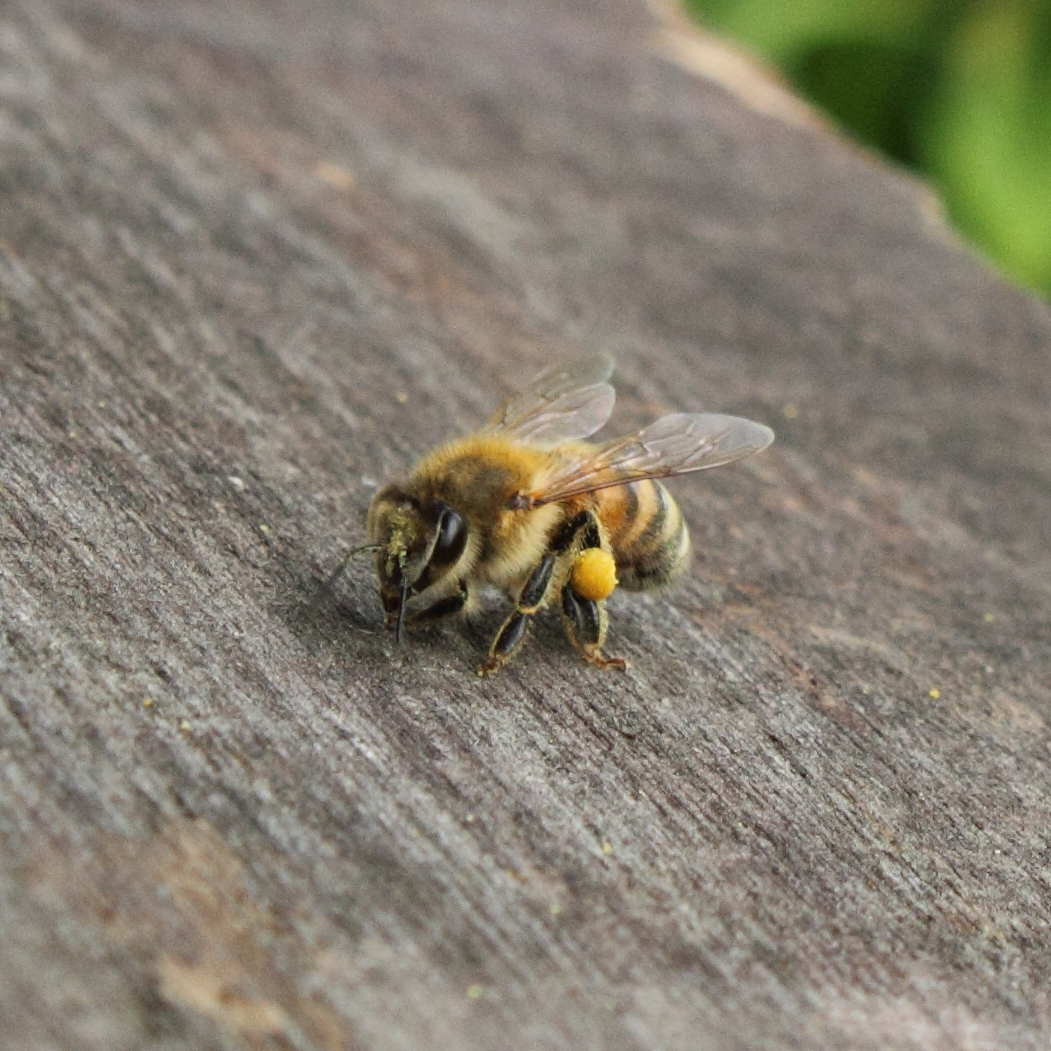Why are bees important?
"The most important thing that bees do is pollinate. Pollination is needed for plants to reproduce, and so many plants depend on bees or other insects as pollinators. When a bee collects nectar and pollen from the flower of a plant, some pollen from the stamens—the male reproductive organ of the flower—sticks to the hairs of her body. When she visits the next flower, some of this pollen is rubbed off onto the stigma, or tip of the pistil—the female reproductive organ of the flower. When this happens, fertilization is possible, and a fruit, carrying seeds, can develop."
Which foods do bees pollinate?
- Almonds
- Alfalfa
- Apples
- Asparagus
- Beans
- Beets
- Blackberries
- Blueberries
- Cabbage
- And many more!
Common types of Bees

Honeybees
"Honeybees (Apis mellifera) are social insects that vary in colour, usually from a yellow-brown to a dark brown, depending on the type. They are about 12.5 mm long with a hairy body. Honeybees feed on flower nectar and also collect pollen to feed their larvae. In the wild, they usually live in hollowed-out trees and, using wax they have produced, build cells in which to store honey and raise their larvae. Nowadays, however, most honeybees live in manufactured hives provided by beekeepers."

Italian Domesticated Honeybee
"Italian honeybees (Apis mellifera ligustica) were the first domesticated honeybees brought to North America. They are gentle and widespread, in part because they are so adaptable to different climates. Their bodies have yellow-brown and dark brown bands. These honeybees reproduce quickly and keep a large colony over the winter. The downside to this is that they need more honey and pollen stored to survive the winter."

Carniolan Domesticated Honeybee
"Carniolan honeybees (Apis mellifera carnica) are one of the most popular choices for beekeepers. They are gentle, and very resistant to insect pests. They adapt their population depending on the amount of nectar available, so when there are fewer flowers to visit, there are fewer bees in the hive. This means they keep a small colony over the winter, and therefore need less stored honey. They are about the same size as the Italian honeybee, but greyer in colour. They do well in areas with long winters, but do not like really hot summer days."